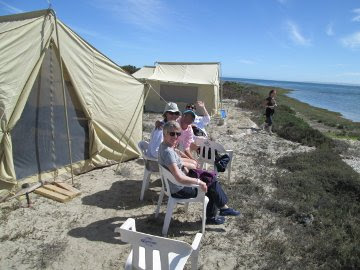Whale watching brings people and whales together and improve the knowledge of the perils these different whale species encounters today. However, these whales have come a long way since the time when they were on the edge of extinction. The grey whales have made their way back to the ocean and a place in the hearts of the whale lovers. One of the perfect places for spotting whales is, Baja, Mexico. Mexico whales watching can be an electrifying experience if you’re someone with a soft spot for marine mammals. And Mexico whale watching can be an amazing fun, especially if you are going to stay in Baja whale watching camps.
Every year, many species of whales prettify the Mexican pacific coast from Baja California to Oaxaca, pulling thousands of vacationers whose only goal is to admire these gentle giants. In this article, we are going to mention the places where you can spot whales in Mexico:
- Cabo San Lucas: The grey whales dive along Los Cobos in Baja California from January to April for mating. If you plan to go into the ocean, there are different options of transportation, from a regular boat to a classy trimaran. You can also stay in Baja whale watching tents. If you wish to get a better view of whales, then you can opt for glass bottom boat. You can also relax while watching the mesmerizing views of the Pacific Ocean, watch sea lions and fascinating birds along the way.
- Magdalena Bay: Grey whales travel from Canada and Arctic waters and reach the fisherman’s village located at the north end of Magdalena Bay. Apart from offering whale watching, this place has many attractions, so go to the pier, watch the mangroves, and enjoy walking in the pearly sands and bird watching in Magdalena Island. Every year, people here celebrate the festival of Grey whales with traditional and creative activities.
- Nayarit: This place contains two spots for Mexican whales watching; one is Rincon de Guayabitos and the other is Sayulita. Sayulita offers beautiful views of humpback whales peeping out and vaulting amid the waves from November to April. This place has a hippie atmosphere and vivid colors everywhere, so you might not want to miss it. There is another whale watching spot within a thirty minute drive from Sayulita, in the coast of Rincon de Guayabitos, if you wish to go for a second Mexico whale watching site.
- Mazaltan: Every year, many humpback whales quit Alaska, Canada and Oregon to dive more than five thousand kilometers to breed and give birth to their calves in the warm waters of the Pacific Ocean. In between the month of December to March, there is a possibility that you may watch eleven different species of these giant whales. During boat tours, you may even see dolphins, sea lions and killer whales.
- Biosphere Reserve, El Vizcaino : This place is divided between North and South Baja California. EL Vizcaino is one of the biggest safeguarded areas of the world. This place has greeted twenty five hundred grey whales. El Vizcaino has also been listed in the UNESCO WORLD HERITAGE list since 1993. If you plan to go for Mexican whales watching tour, and then staying in Baja Whale watching camps will be an added fun.
NOTE:
- For more information, please call us at 562–889–4016 also email: keith@jonesadventures.com


